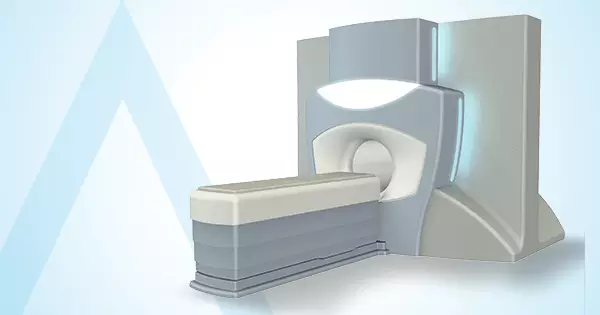What is ROSA (Robotic Surgery Assistant)?
ROSA, or Robotic Surgical Assistant, is a robotic device that adjusts and sizes knee and hip prostheses to the exact size. This innovative device allows knee and hip prostheses to be adjusted and sized to the exact size. It is more effective than normal knee prostheses in terms of rapid healing, restoration of movements and rapid recovery of functions.
ROSA (Robotic Surgical Assistant) allows the surgeon to access the information it collects in the data bank. By using the data collected by the ROSA device, it gives the chance for better planning, decision-making in advanced infections and surgical intervention suitable for the needs of the person.
ROSA device is used for degenerative joint diseases, rheumatic diseases, post-traumatic conditions and primary hip and knee arthritis, joint disorders, total joint replacement applications.
Compared to traditional knee replacements, it allows for a faster healing process and accelerates the recovery of movement. It also helps function to recover quickly.
ROSA (Robotic Surgical Assistant) allows surgeons to make more accurate and precise movements during the operation, which increases the success rate of surgical interventions and optimizes patients' recovery processes.
The growing popularity of ROSA is one example of advances in surgical technology.Such innovations expand the range of diseases and conditions that can be treated in the healthcare sector, improving patients' quality of life.
What are the Uses of Rosa Device?
ROSA is an innovative method developed to minimize surgical errors in total hip and knee replacements and to perform surgery with less tissue damage and incisions. The uses of this device are quite diverse and it is effectively used in the treatment of various orthopedic disorders.
ROSA has a wide range of uses. It can be used effectively in the treatment of various orthopedic conditions such as degenerative joint diseases, rheumatic diseases, post-traumatic conditions and primary hip and knee arthritis. It is also an ideal solution for joint disorders and total joint replacement.
This method enables surgeons to make more precise and accurate movements during surgery, thus optimizing patients' recovery processes. The precision and accuracy offered by ROSA increases the success rate of surgical interventions and plays an important role in improving the quality of life of patients.
How is the ROSA Device Applied?
Surgery with ROSA is performed by preparing robotic tips in the same sterile conditions after the surgeons' preparation, taking the surgical case and controlling it through an engineer.
Under sterile conditions, surgeons prepare the robotic tips and the patient is taken into surgery. The device is then controlled and guided by an engineer. This process is meticulously executed to ensure that the surgical procedure is performed correctly.
ROSA's robotic technology offers surgeons the ability to move with greater precision and accuracy. This allows surgeons to work in a less invasive way during surgery, speeding up patients' recovery and reducing the risk of complications.
Which diseases is the ROSA device used to treat?
The ROSA (Robotic Surgical Assistant) device is a surgical instrument used in the treatment of various orthopedic conditions. The use of ROSA is particularly common in degenerative joint diseases, rheumatic diseases, post-traumatic conditions and primary hip and knee arthritis.
Degenerative Joint Diseases
Degenerative Joint Diseases are conditions that usually result from the wear and tear of the cartilage in the joints over time. These diseases usually begin to appear with age and can cause pain, stiffness and limitation of movement in the joints. The ROSA device is a method frequently used in the treatment of such diseases. It allows surgeons to work more accurately and precisely, especially in joint replacement applications, thus improving the quality of life of patients.
Rheumatic Diseases
Rheumatic diseases are diseases in which the immune system targets its own tissues and causes inflammation. Some of these diseases can lead to joint inflammation (arthritis). The Rosa device allows surgeons to perform a more effective surgical intervention in the treatment of such conditions.
Post-Traumatic Conditions
Damage to joints as a result of trauma is often referred to as post-traumatic conditions. These conditions are often the result of sports injuries or accidents and may require repair of joint damage or prosthetics. In such cases, the ROSA device allows surgeons to work with precision, helping patients to have a faster and more successful recovery.
Primary Hip and Knee Arthritis
The main causes of cartilage damage in joints are usually primary hip and knee arthritis. Progression of these diseases may require procedures such as joint replacement. The ROSA device allows surgeons to perform more accurate and precise movements in such surgical interventions.
Generally, the ROSA device enables surgeons to work precisely in the treatment of various orthopedic diseases, affecting patients' recovery time and quality of life.
How is Knee Replacement Treatment Performed with ROSA Robot?
Unlike the classical method, all incisions and placement stages of the patient are planned and applied by controlling the robot during knee replacement with Rosa.
Traditional knee replacement surgery relies on surgical skill and experience as surgeons have to manually make incisions and insert the prosthesis. However, the ROSA Robot helps the doctor to make this process more controlled and predictable. Before surgery, ROSA scans the anatomical structures on the patient in detail and performs surgical planning. This helps surgeons to ensure the correct positioning of the prosthesis and minimal incisions.
During surgery, the ROSA Robot moves according to the surgeon's instructions, controlling the making of incisions and the placement of the prosthesis. The robot's precise movements ensure fewer errors compared to the surgeon's manual dexterity. In addition, ROSA's 3D imaging and navigation features help surgeons to better visualize the surgical field.















